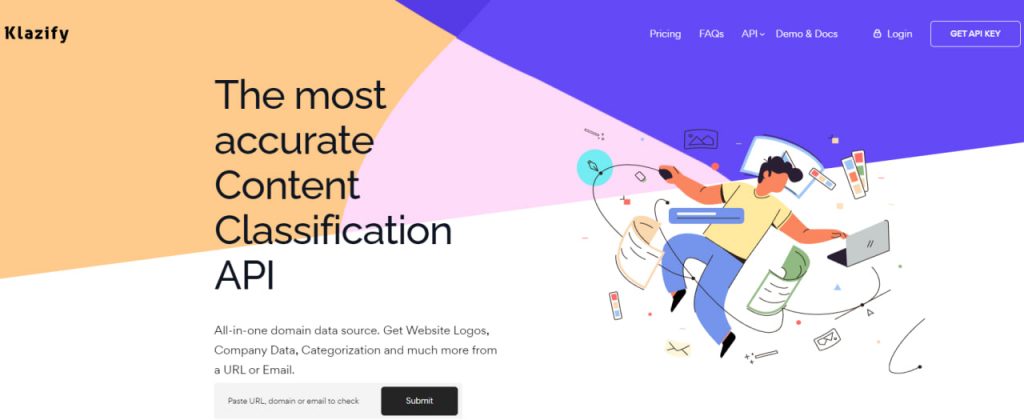In today’s digital age, there is an overwhelming amount of content available on the internet. From blog posts to news articles, social media updates to research papers, the sheer volume of information can be overwhelming. This has led to the development of tools and technologies that can help us manage this vast amount of data. One such technology is domain data APIs.
Domain data APIs are software tools that can automatically categorize digital content based on its topic, tone, and other factors. These tools use a combination of natural language processing (NLP) and machine learning (ML) algorithms to identify the main topics and themes present in a piece of content.
One such API that has gained popularity recently is Klazify. This API provides an easy-to-use interface that can be integrated into various applications and websites to automatically categorize content. It uses advanced ML algorithms to accurately identify the topic and tone of a piece of content.

What Are The Use Cases Of This API?
Klazify can help organizations to extract valuable insights from large amounts of data. By categorizing content, businesses can identify trends and patterns in their industry, monitor competitors, and make informed decisions about their marketing strategies.
For example, a company that sells sports equipment could use content classification to analyze articles and blog posts about various sports. By categorizing the content by sport, they could identify which sports are currently popular and which are on the rise. This information could help them to make informed decisions about which products to promote and which markets to target.
Klazify can also improve the user experience of websites and applications. By categorizing content, businesses can present users with more relevant and personalized content. This can improve engagement and increase the likelihood of users returning to the site or app.
How Does Klazify Work?
Klazify is at its core a content classification API, and it has several dedicated endpoints to perform accurate queries on several fields. To find domain data, the API has an endpoint that focuses on precisely that.
Here’s an example of how to retrieve a domain’s data using this API, all it takes is the company’s URL as input for it to perform a search. In this case, the target of the search was Nintendo of America:
{
"domain": {
"domain_url": "https://www.nintendo.com/"
},
"success": true,
"objects": {
"company": {
"name": "Nintendo",
"city": "Redmond",
"stateCode": "WA",
"countryCode": "US",
"employeesRange": "1K-5K",
"revenue": null,
"raised": null,
"tags": [
"Video Games",
"B2C"
]
}
}
}One could also ask the API to find when a company’s domain expires, using the appropriate endpoint:
{
"domain": {
"domain_url": "https://www.nintendo.com/"
},
"success": true,
"domain_registration_data": {
"domain_age_date": "1995-01-10",
"domain_age_days_ago": 10336,
"domain_expiration_date": "2024-01-09",
"domain_expiration_days_left": 254
}
}How Can I Get This API?
APIs such as Klazify can provide businesses and organizations with a powerful tool for managing and analyzing digital content. By automatically analyzing domain data, this API can help businesses to extract valuable insights, improve the user experience, and comply with regulations. With the amount of data available online only set to increase, content classification is set to become an increasingly important tool for businesses in the years to come. You can try out this powerful tool by following these instructions:

- Create an account at Klazify’s site. Then select your desired endpoint of choice.
- Use these codes and then call the API. You can get a unique API key on your account dashboard.
- Finally, press the “Run” button and you’re ready! The API response will be on your screen. You can also choose a programming language.

